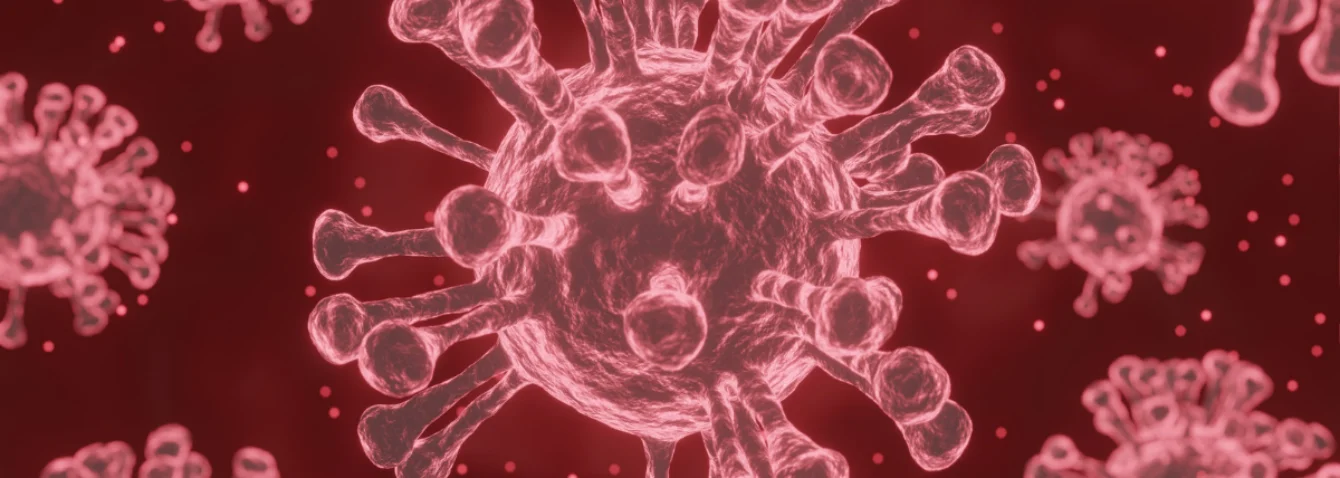
White Paper on long COVID confirms women more likely to be diagnosed with condition
FAIR Health Inc, an American health insurance company, has published an analysis of private healthcare claim records from patients diagnosed with long COVID between October 2021 and January 2022. The study is one of the first of its kind to analyse a large long COVID data set, and the findings highlight the need for more research into the link between COVID-19 and female hormones.
The official ICD-10 diagnostic code U09.9 was introduced in October 2021 for ‘post COVID-19 condition, unspecified’ and researchers analysed FAIR Health’s patient claim data for the subsequent 4 months for any claims categorised with this diagnostic code.
During this time, there were 78,252 patients categorised with U09.9 and their data were analysed according to age, gender, whether they were hospitalised and admitted to ICU or not, how many pre-existing chronic co-morbidities were present, and what their co-occurring diagnoses and future health risk scores were.
Risk of long COVID is not linked with severity of initial infection
The majority of patients (75.8%) had not been hospitalised with the COVID-19 infection, and women were less likely to be admitted than men (18.4% vs 32.5% respectively).
Sex and age differences
The incidence of long COVID was highest in the 36-50 and 51-64 year age groups (34.6% and 31.6% respectively). Together, people in this age band accounted for two thirds of all patients with long COVID.
Women were disproportionately affected (60% women vs 40% men), and the group with the highest incidence was women aged 36-64 years (40% of the total number of long COVID patients). 17% of patients with long Covid were aged 23-35 years. Interestingly, in this age band, 64.7% patients (11% overall) were female.
Dr Sarah Glynne, GP with a special interest in long COVID, explains:
“This data is entirely consistent with what we have already observed in epidemiological studies. Most people with long COVID had a relatively mild acute illness and were not admitted to hospital. Men are at higher risk of severe infection, but women are 50% more likely to develop long COVID, and we know that women aged 40-60 are at particularly high risk (1,2). 40% of all patients in this study were women aged 36 to 64. COVID-19 is believed to be infecting the ovaries, triggering an earlier or more sudden menopause in middle-aged women. Hormone deficiency (estrogen and testosterone) underlies and exacerbates many of the symptoms of long COVID in this patient group, and is a major barrier to recovery unless treated with hormone replacement therapy (HRT).”
Dr Glynne continues:
“The particularly high proportion of female patients in the 23-35 year age group is interesting. This has not been observed previously. Premature Ovarian Insufficiency (POI or ‘premature menopause’) affects 1 in a 100 women under the age of 40. I do wonder if the incidence is higher in long COVID patients, but there is no data to support this theory. It is important to be aware that younger women with long COVID may also be at risk of hormone deficiency, as they are more likely to be missed (POI is a clinical diagnosis, and blood tests are not always helpful). Women with POI have more to gain from hormone replacement for example, the risk of developing cardiovascular disease or osteoporosis is higher in women with POI, as they are deprived of estrogen and testosterone for longer. More research needs to be done in this area.”
Nearly a third of the study population (30.7%) had no pre-existing comorbidities, suggesting that large numbers of people are now living with the debilitating effects of long COVID when they were previously well.
Long COVID symptoms
The three most reported symptoms reported by patients with long COVID, across all ages and genders, were abnormalities of breathing, cough, and malaise and fatigue.
Palpitations, generalised anxiety and sleep disorders were also common. Dr Sarah Glynne notes:
“Many of these symptoms are common to both perimenopause/menopause and long COVID, and there is currently no diagnostic test for either. A trial of HRT can be a useful diagnostic tool in many women, to establish which symptoms are attributable to hormone deficiency and which may have an alternate aetiology and therefore require a different approach.”
Change to future health risk
The study also analysed the likely impact of COVID-19 infection on future health expenditure. The authors concluded that previously healthy patients with long COVID are more likely to consume healthcare resources and will incur significant healthcare costs that will only increase as the number of patients diagnosed with long COVID continues to rise.
Founder of the Newson Health Menopause Society, Dr Louise Newson, responds to the conclusions of the White Paper:
“As the symptoms of the perimenopause, menopause and long COVID are similar, it is so important that perimenopausal and menopausal women are given adequate information and treatment, often including HRT with testosterone. It is likely that far too many women with long COVID are not being considered as being perimenopausal or menopausal, which needs to change. More research in the important role of female hormones in long COVID needs to be undertaken urgently.”
References
1. REACT-Long Covid Study. Persistent symptoms following SARS-CoV-2 infection in a random community sample of 508,707 people. Whitaker, M., et al. June 2021. Available at: https://spiral.imperial.ac.uk/handle/10044/1/89844
2. Sudre, C.H., Murray, B., Varsavsky, T. et al. Attributes and predictors of long COVID. Nat Med 27, 626–631 (2021). https://doi.org/10.1038/s41591-021-01292-y